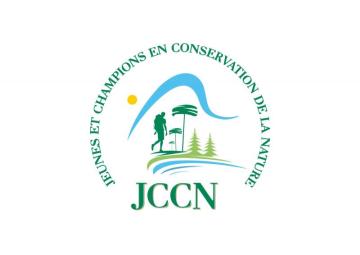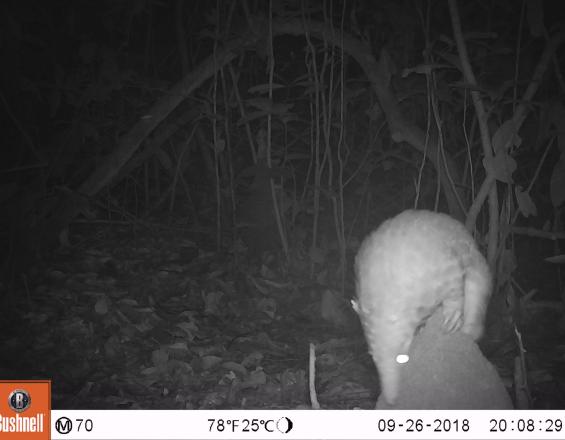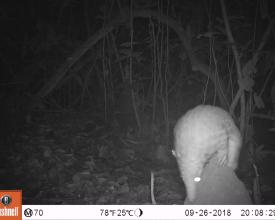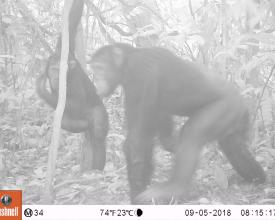
WEKO Forest: A model for wildlife conservation by local communities in Tshopo province

The WEKO forest is located in the south of the Tshopo province, in the Isangi territory. The forest is fully located within the SODEFOR forest concession, where communities holding customary rights are supported by the Centre International de Recherche Forestière (CIFOR) as part of the wildlife component of the FORETS (Training and Research in Tshopo) project, with a view to community conservation. The main aim of the initiative is to preserve and restore wildlife species and their habitats. The WEKO forest is an important ecological corridor, providing a passageway for wildlife to the Yangambi biosphere reserve. Situated in the central basin of the Congo Basin, the WEKO forest is home to several types of forest ecosystem, including monodominant Gilbertiodendron dewevrei forests, and primary and secondary mixed forests, which provide special habitats for several animal species.
Context
Challenges addressed
Supporting the community of WEKO in this community conservation initiative has mainly provided a solution to the illegal and uncontrolled hunting of wildlife, including protected species.
Location
Process
Summary of the process
The landowning communities of the WEKO forest have traditional rights to use its natural resources. It should be noted that the area is traditionally managed by the community represented by their Chief of Group. There is a site development plan and a wildlife management plan set up by the Wildlife and Landscape Management Committee, which is the community decision-making structure. As part of their traditional way of life, communities still retain taboos and prohibitions with regard to certain resources. Through regular meetings, the wildlife management committee also decides on the direction to be taken by community development support (support for income-generating activities, setting up an agroforestry system, environmental education, etc.). The wildlife management committee works for the site on a voluntary basis and participates in meetings to discuss the implementation of mechanisms that could enable the community to access wildlife and biodiversity credit.
Building Blocks
a) Existence of an agreement between the SODEFOR concession and communities on traditional natural resource management
The specifications define the concessionaire's obligations towards the community, as well as the recognized rights of communities to natural resource management.
Enabling factors
The specifications recognize that the landowning communities of the WEKO forest have the right to use natural resources in the traditional way. It also defines the species to be harvested by the concessionaire.
Lesson learned
In terms of teaching, the existence of the notebook creates a climate of collaboration between the dealer and the community.
Existence of a local wildlife and landscape management committee
The local wildlife and landscape management committee is the community decision-making structure.
Enabling factors
Through regular meetings, the wildlife management committee plans site management activities with a view to the sustainable management of wildlife and natural ecosystems.
Lesson learned
The wildlife management committee also decides how support for community development (support for income-generating activities, setting up an agroforestry system, environmental education, etc.) is to be directed
Impacts
The WEKO forest is an important ecological corridor, providing a passageway for wildlife to the Yangambi biosphere reserve. The initiative thus contributes to the preservation of wildlife by the communities. The WEKO community has the legal right to exploit and manage natural resources in the traditional way. Through the management plan put in place, the community ensures the proper management of forest ecosystems and associated resources, which offer a diverse range of ecosystem goods and services used for a variety of purposes. These include edible mushrooms, Marantaceae leaves used as packaging, caterpillars (Mbinzo), food and medicinal plants, wild fruits and so on.
Beneficiaries
The beneficiaries of the WEKO forest community conservation initiative are local communities, technical and financial partners, researchers and environmental activists.
Sustainable Development Goals
Story
The WEKO forest is located in the south of Tshopo province, in the Isangi territory. The forest is fully located within the SODEFOR forest concession. WEKO Forest is an area within the SODEFOR concession where landowning communities have traditional rights to use natural resources. The communities holding customary rights to the WEKO forest are supported by the Centre de Recherche Forestière Internationale (CIFOR) as part of the wildlife component of the FORETS (Formation et Recherche dans la Tshopo) project, with a view to community conservation. The main aim of the initiative is to preserve and restore wildlife species and their habitats.
Located in the central basin of the Congo Basin, the WEKO forest is home to several types of forest ecosystems, including monodominant Gilbertiodendron dewevrei forests, and primary and secondary mixed forests, which provide special habitats for several animal species. The forest also offers several species of emblematic trees and timber of great economic interest. The following non-exhaustive table lists some of the most important woody plant species found in the area. In addition to plant species, the WEKO forest is also a preferred sanctuary for several wildlife species with special conservation status, including totally or partially protected species. These include chimpanzees, pangolins (white-bellied, black-bellied, etc.), water chevrotains and Sitatunga. The forest ecosystem and its available resources thus offer a diverse range of ecosystem goods and services used for a variety of purposes. These include edible mushrooms, Marantaceae leaves used as packaging, caterpillars (Mbinzo), food and medicinal plants, wild fruits and so on.




